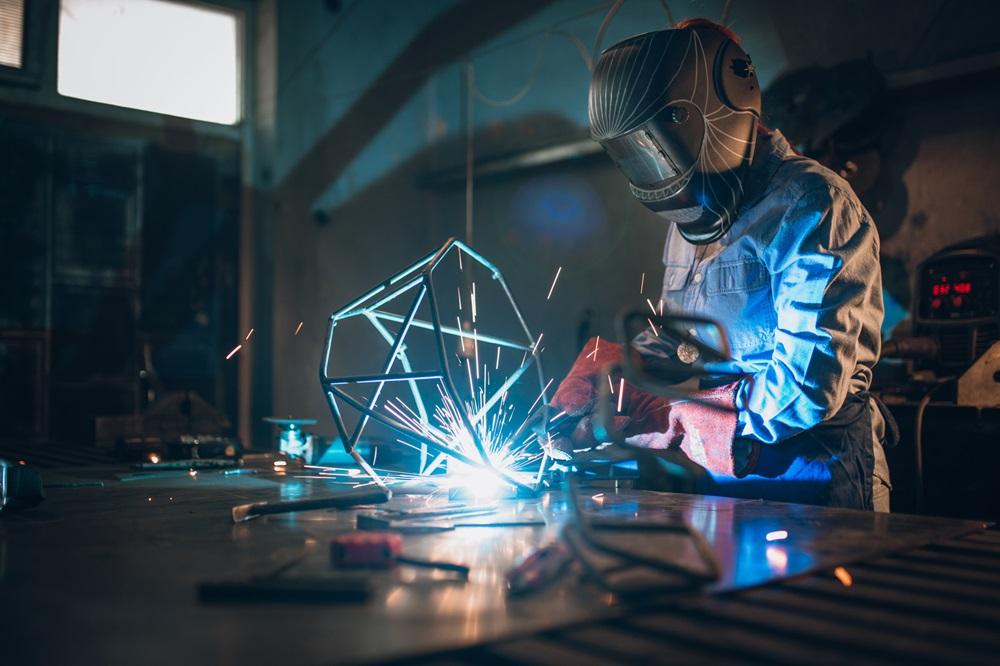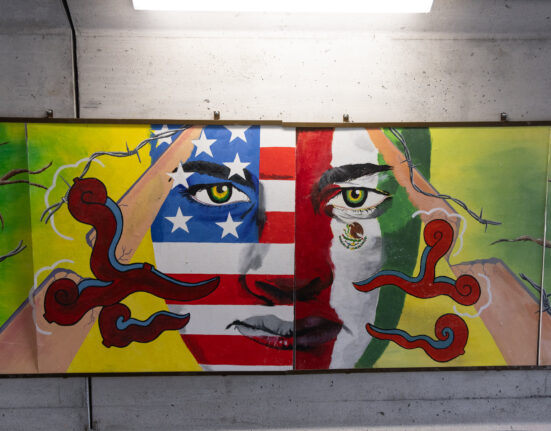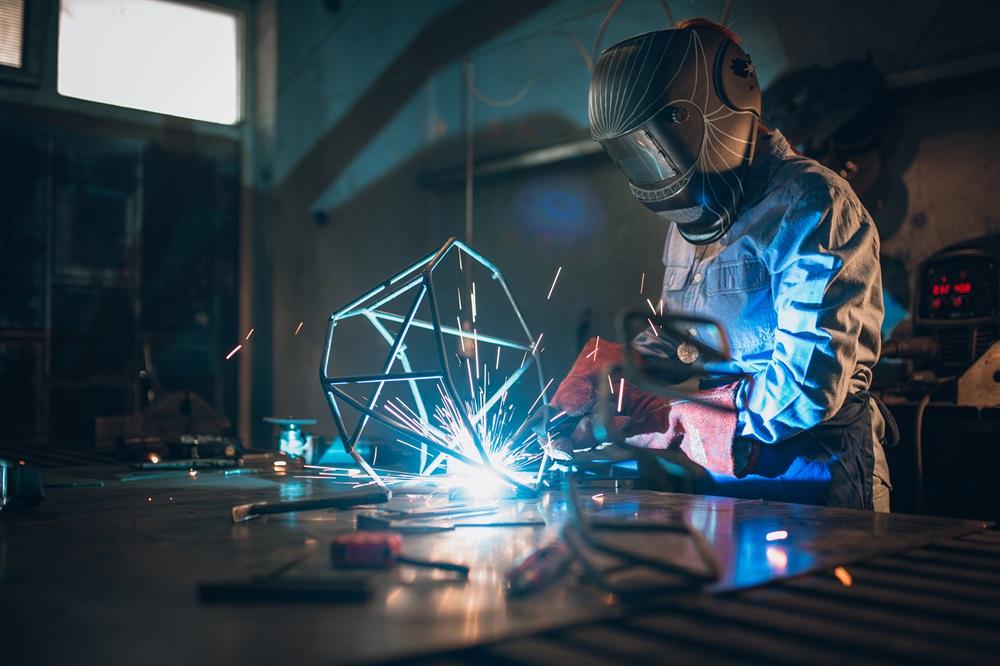
Tapping into the creative, artistic side of metalwork sometimes requires only some basic equipment, knowledge, and the right advice. hobo_018/E+/Getty Images
Ever wonder if you have what it takes to tap into your creative side and fabricate something artistic out of metal? Accomplished metal artists Tom Patsis, Luis Varela-Rico, and Michael Bennett all pondered this at one point or another.
That first foray into the metal arts can be intimidating, but the three men have shown no signs of slowing down. And it all began with that first project—basic tools and all.
“I don’t know how the hell I got to being a custom trophy-maker, but I still get to be creative, get to build stuff, and people trust me,” said Patsis.
The Welder spoke with the three artists who shared tips and advice for beginner metal artists, those aspiring to become artists, and those curious about the process of turning metal into art.
Solving Problems
Most metal artists can weld. Before forming his business, Cold Hard Art, Brownsburg, Ind.-based Patsis worked in drag racing.
“When I first started on the race team, I didn’t think welding would be nothing more than repairing something on a chassis every once in a while,” he said. “Nothing to the extent where I’m welding every single day like this.”
He now spends most of his time putting his own touches on trophies, sculptures, and replicas that have caught the eyes of many.
In early 2021, Patsis gained media attention for turning former NFL quarterback Alex Smith’s leg brace into a Lombardi Trophy replica. Smith’s wife, Elizabeth, gave the trophy replica to her husband as a Christmas gift, and her social media posts about the trophy and Patsis’ work went viral. “You would have thought I cured cancer,” he joked about his sudden popularity.
Later that year, Patsis gained more exposure when he won Netflix’s “Metal Shop Masters,” which pitted contestants in a last-person-standing competition to find its top metal artist.
“I’m in the perfect spot because now I get to deal with a little of everybody from every place,” he said.
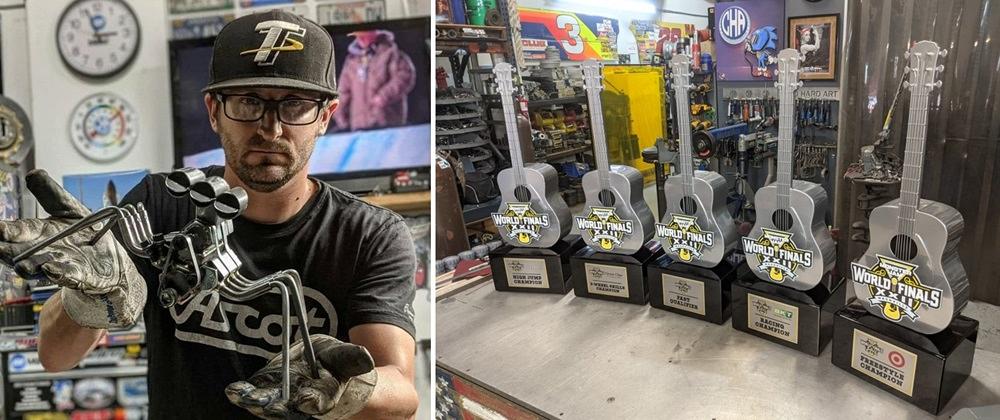
Tom Patsis, owner of Cold Hard Art in Brownsburg, Ind., and winner of Netflix’s “Metal Shop Masters,” delivers custom items, including sculptures, replicas, and trophies. Tom Patsis
Despite his business’ name and what he’s associated with, Patsis doesn’t see himself as an artist. Rather, he sees himself as a “problem-solver” and advises aspiring artists to be problem-solvers as well. How do you come up with a new trophy design? How do you switch from a phoenix rising theme to a Lombardi Trophy?
Patsis said he is fortunate to have a shop with a variety of tools that make it possible for him to tackle many projects. Having a plasma table, for example, means he can cut almost anything he wants. First-time artists and hobbyists may not be as lucky.
“But I know and see a lot of metal artists being really good with a plasma torch,” he said. “That thing can do some creative shapes and makes the job of cutting easier.”
On hand tools: “Basically, any basic hand tools come in handy. But most of the time, I feel like most everything in my shop is to remove metal—abrasive tools, air tools, sanders, grinders, baby belt sanders.”
When welding that first sculpture, Patsis said he’d stick with gas metal arc welding (GMAW, or MIG).
“Most hobbyists will be MIG welding more predominantly than TIG welding, as TIG welding requires two hands,” he said. “Sometimes when you’re by yourself, it’s nice to have a MIG welder.”
His advice for those looking to tap into the artistic side of metalworking? Make pieces that you are passionate about.
“Almost pretend like you’re going to keep it,” advised Patsis. “When you like something or are passionate about it, it tends to turn out better.”
And don’t forget the poster board, he added. Making designs on poster board and making poster board templates will help prevent cutting into sheet metal only to realize the piece did not turn out as planned.
“It’s just good to visualize something,” he said.
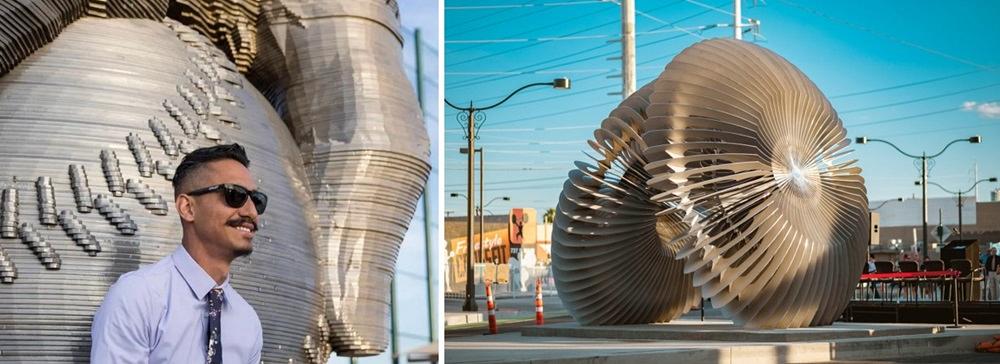
Luis Varela-Rico is a Las Vegas-based artist who has fabricated several public and private metal sculptures, many of them incorporating CNC, welding, and CAD. His “Radial Symmetry,” which stands in Las Vegas’ Arts District neighborhood, is made of two large stainless steel sculptures weighing 10 tons each. Luis Varela-Rico
Starting From Scratch
Another “Metal Shop Masters” contestant, Las Vegas-based Luis Varela-Rico, developed an early interest in ceramics. The move to metal grew organically for him as he worked more on cars.
His first metal art projects were furniture pieces, Varela-Rico said.
“I was making a lot of weird, abstract objects,” he added. “I don’t necessarily remember exactly what I made, but I do remember I started making coffee tables out of metal.”
But like so many others, he didn’t start with much equipment.
“I had nothing. I had a little welder—a little 110-V welder—and had a 4.5-in. grinder. To this day, that’s really the starter pack, a hand-held grinder and a welder,” he said. “You can do a lot of things with those two tools.”
These days, Varela-Rico has access to much more advanced metalworking technology, with some of his projects incorporating CNC, welding, and CAD design. But he said beginners can go simple and basic and still make something to be proud of.
Tools for aspiring metal sculptors are “ultimately about feel; how the tool feels in your hand, how durable they are,” he said. For instance, a more affordable grinder can be just as effective as a top-of-the-line model. Tastes may eventually change as the artist dives into more complex projects, becomes successful, or has access to more resources.
“To that degree, you can almost use that logic on welders,” Varela-Rico added. He is less inclined to endorse a more budget-conscious machine, although he has used them before to success.
“When it comes to a tool like a welder, that’s going to be an investment that you’ll have for a while. If you can spend a little bit more money, get something you can grow into.”
A toolbox of wrenches and hand tools is a must, he added—never say no to hand-me-downs, “whether it’s your grandfather’s huge toolchest or something small.”
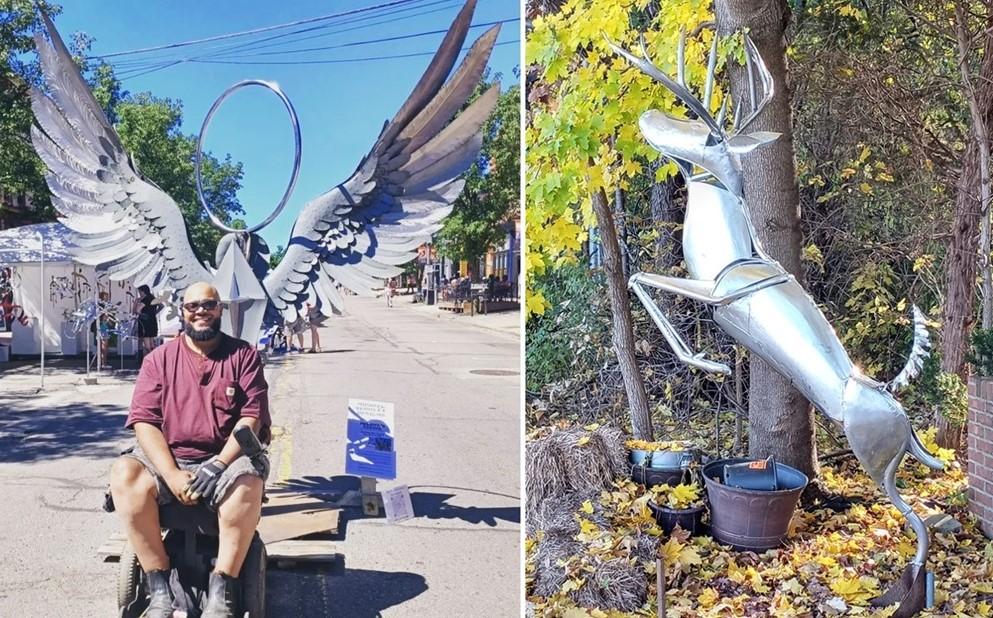
Michael Bennett is the artist behind Handicapmade Metal Art, which specializes in custom metal art projects. The Wadsworth, Ill.-based artist, who is paralyzed from the chest down, says new metal artists should always be on the lookout for interesting pieces of scrap metal or equipment. Michael Bennett
Tape measures are an underrated item for metal artists too. Some may choose not to measure things, but Varela-Rico said he is always measuring.
Another valuable item to have is a good set of gloves, as hands will get beat up pretty good from cuts and burns associated with working with sheet metal.
Boots, long-sleeved shirts, and gloves should be made from nonsynthetic material to reduce or eliminate the risk of burns.
The biggest piece of advice Varela-Rico shared, though, is to “never stop learning. It’s hard to teach, but you must have that insatiable appetite to learn and to be curious about how things work.”
On the Lookout
Wadsworth, Ill.-based Michael Bennett grew as a metal artist when he first began selling his artwork at local flea and farmers’ markets.
“At first, I was doing things I thought were cool, like skulls and dragons. But then after a couple of weeks of selling only one or two things, I started asking people what they wanted,” Bennett said.
“The flea market up there, I’d see people with dogs. [I] tend to take note of the dog breeds and I’d just gotten a CNC plasma cutter,” he added. “To help teach myself to program the plasma cutter, I started programming some basic, simple dog silhouettes. That was a big seller up there.”
Bennett has since grown his small business, Handicapmade Metal Art (an accident years ago paralyzed Bennett from the chest down). He has been commissioned for projects like monogrammed driveway entry gates, personalized wall art, metal lettering, and metal silhouettes.
Through Bennett’s experience as a metal artist, fabricator, and mechanic, he has plenty of tips to share with beginning metal artists or those curious about it.
First, friends and family can be valuable lookouts for scrap metal, he pointed out.
“If you see a piece of metal that’s straight or with a really cool bend, pick it up,” he said. Old workout equipment, for instance, has good structural steel components that are ideal for art projects.
Another piece of advice from Bennett? Be thrifty and look at materials wherever and whenever.
“A lot of stuff nowadays, when I’m doing things on budget, I get a lot of material from online auctions,” he said. “I’ll get brand-new filing cabinets that were just dented that Grainger can’t sell but I can get for $5 because nobody wants one that fell off a truck. But out of that filing cabinet, I can get a 4-ft. by 7-ft. sheet of metal.”
With a basic fabrication project, it’s OK to use a small, basic welding power source—anything to stick the pieces together. “But I did start out with just a small little Lincoln [Electric welding machine],” he added.
“A lot of times, when I look for tools, I go to Harbor Freight … I don’t try to buy expensive tools unless the job asks for an expensive tool,” Bennett said.
On grinders, Bennett said, “It’s amazing the stuff you can do with a grinder. To start out, get a grinder with a few different wheels on it. It gets annoying changing out the wheels, so I suggest going out and buying a couple of cheap grinders. That way, you have one with a cutoff wheel, one with a wire wheel. A lot of stuff you can do with just a basic grinder.”

